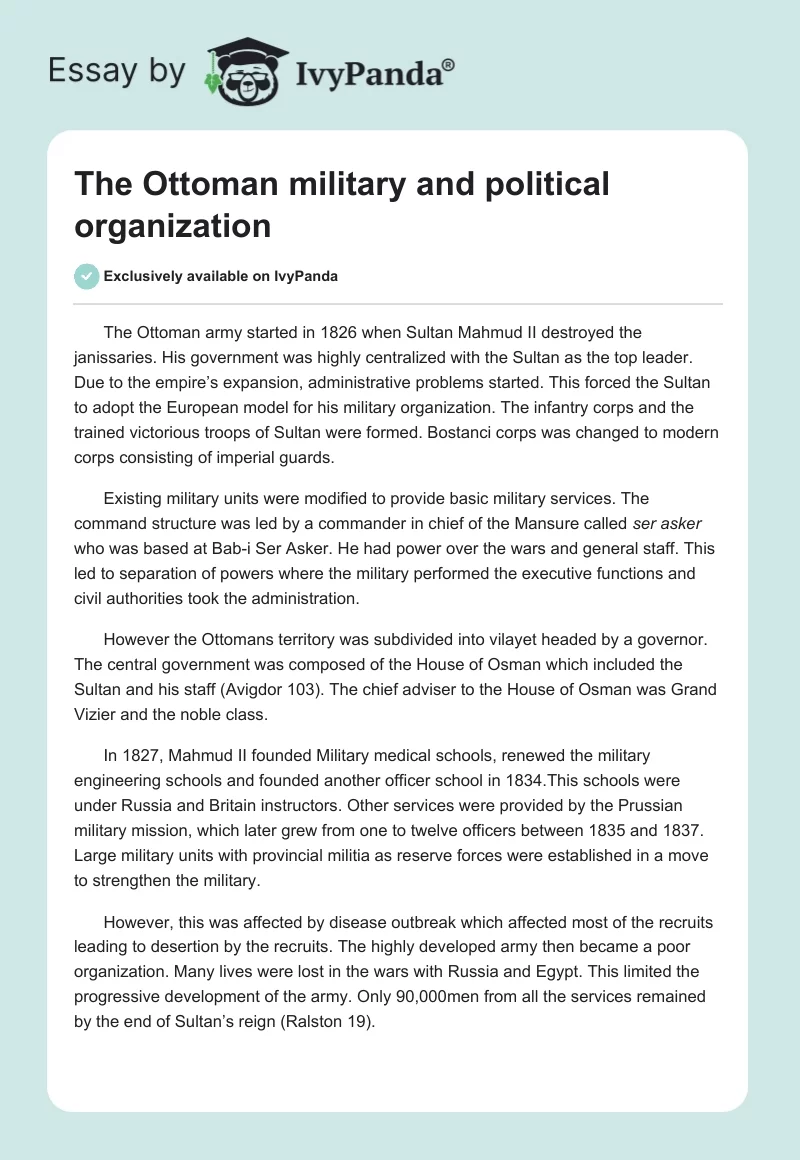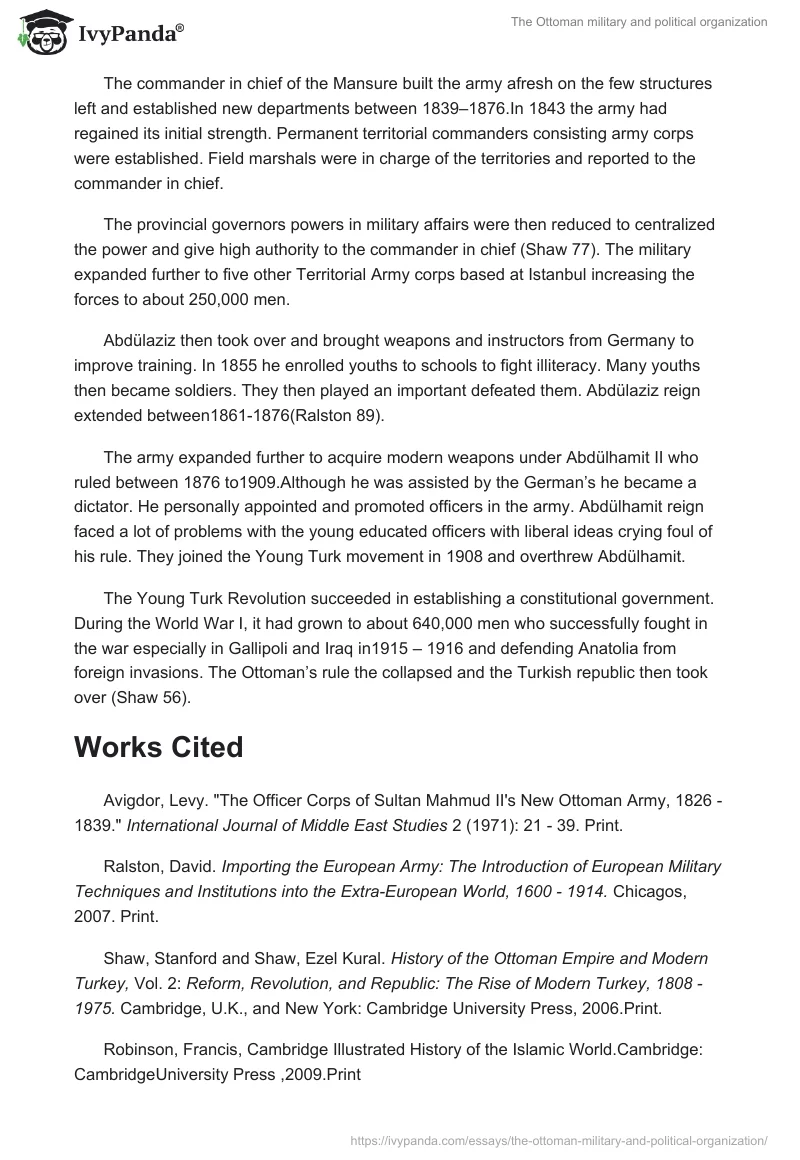The Ottoman army started in 1826 when Sultan Mahmud II destroyed the janissaries. His government was highly centralized with the Sultan as the top leader. Due to the empire’s expansion, administrative problems started. This forced the Sultan to adopt the European model for his military organization. The infantry corps and the trained victorious troops of Sultan were formed. Bostanci corps was changed to modern corps consisting of imperial guards.
Existing military units were modified to provide basic military services. The command structure was led by a commander in chief of the Mansure called ser asker who was based at Bab-i Ser Asker. He had power over the wars and general staff. This led to separation of powers where the military performed the executive functions and civil authorities took the administration.
However the Ottomans territory was subdivided into vilayet headed by a governor. The central government was composed of the House of Osman which included the Sultan and his staff (Avigdor 103). The chief adviser to the House of Osman was Grand Vizier and the noble class.
In 1827, Mahmud II founded Military medical schools, renewed the military engineering schools and founded another officer school in 1834.This schools were under Russia and Britain instructors. Other services were provided by the Prussian military mission, which later grew from one to twelve officers between 1835 and 1837. Large military units with provincial militia as reserve forces were established in a move to strengthen the military.
However, this was affected by disease outbreak which affected most of the recruits leading to desertion by the recruits. The highly developed army then became a poor organization. Many lives were lost in the wars with Russia and Egypt. This limited the progressive development of the army. Only 90,000men from all the services remained by the end of Sultan’s reign (Ralston 19).
The commander in chief of the Mansure built the army afresh on the few structures left and established new departments between 1839–1876.In 1843 the army had regained its initial strength. Permanent territorial commanders consisting army corps were established. Field marshals were in charge of the territories and reported to the commander in chief.
The provincial governors powers in military affairs were then reduced to centralized the power and give high authority to the commander in chief (Shaw 77). The military expanded further to five other Territorial Army corps based at Istanbul increasing the forces to about 250,000 men.
Abdülaziz then took over and brought weapons and instructors from Germany to improve training. In 1855 he enrolled youths to schools to fight illiteracy. Many youths then became soldiers. They then played an important defeated them. Abdülaziz reign extended between1861-1876(Ralston 89).
The army expanded further to acquire modern weapons under Abdülhamit II who ruled between 1876 to1909.Although he was assisted by the German’s he became a dictator. He personally appointed and promoted officers in the army. Abdülhamit reign faced a lot of problems with the young educated officers with liberal ideas crying foul of his rule. They joined the Young Turk movement in 1908 and overthrew Abdülhamit.
The Young Turk Revolution succeeded in establishing a constitutional government. During the World War I, it had grown to about 640,000 men who successfully fought in the war especially in Gallipoli and Iraq in1915 – 1916 and defending Anatolia from foreign invasions. The Ottoman’s rule the collapsed and the Turkish republic then took over (Shaw 56).
Works Cited
Avigdor, Levy. “The Officer Corps of Sultan Mahmud II’s New Ottoman Army, 1826 – 1839.” International Journal of Middle East Studies 2 (1971): 21 – 39. Print.
Ralston, David. Importing the European Army: The Introduction of European Military Techniques and Institutions into the Extra-European World, 1600 – 1914. Chicagos, 2007. Print.
Shaw, Stanford and Shaw, Ezel Kural. History of the Ottoman Empire and Modern Turkey, Vol. 2: Reform, Revolution, and Republic: The Rise of Modern Turkey, 1808 – 1975. Cambridge, U.K., and New York: Cambridge University Press, 2006.Print.
Robinson, Francis, Cambridge Illustrated History of the Islamic World.Cambridge: CambridgeUniversity Press ,2009.Print
Sowell, Kirk. The Arab World, an Illustrated History.New York: Hippocrene Books,2004.


